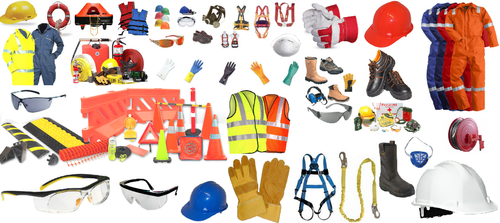Global Forum For Indurstrial Devlopment is SPONSORED BY ICO INDIA
- MP Society Registration (Act. 1973 No. 44) 03/27/01/21857/19 (MSME Forum Established Since-2009)

From portable industrial equipment to heavy-duty industrial equipment, there are different types of Industrial Supplies manufactured utilizing cutting-edge technology in line with international & national quality standards. Designed with good-quality materials, these products are corrosion-resistant & highly durable. Find the list of Industrial Supplies wholesalers, suppliers, & distributors for buying in India at favourable prices.
and currently serves the worldwide industrial community from its headquarters in Baton Rouge, Louisiana and export division in Houston, Texas. We are dedicated to providing your hard to find industrial material needs. Our expansive inventory in pipe, valves, flanges and fittings guarantees you will never have to wait for your material. ISI has a team of salesmen to provide the client with results driven solutions, which includes the best price and delivery for time sensitive material. ISI utilizes teaming agreements with prime contractors in order to provide integrated PVF solutions that include direct material supply, onsite consignment inventory, fabrication and manufacturing of engineered goods. We continuously meet and exceed our clients expectations by delivering material on time and per the required specifications.
Technical advances are a constant occurrence in the electric and Our inventory experts will analyze your material and storage requirements, set up appropriate inventory levels, and develop ordering controls. We use this information to customize an inventory program that meets your project demands.
Our experienced staff will coordinate the delivery of the storage units and perform onsite installation of shelving and bins. Items are organized, labeled, coded, and stored in a safe and secure manner.
We deliver directly to your facility, thus eliminating freight charges. Reporting is provided for budgeting and forecasting needs.
ISI makes it easy to source the products you need to keep your employees on schedule.
The many advantages to having material on-site include: craft delay from material shortage, shortens procurement backlog of RFQ's, warehouse personnel time & document control cost savings.
The #1 reason for lost productivity is material delay.
The on-site stocking trailers are proven to add cost savings to the project.
At Industrial Supply, we don't just offer products, we make sure that you never run out of the products you need. Our integrated supply services provide customers with solutions that help them streamline their inventory management processes, so they can focus on the more important things -- like, keeping their employees productive and their business profitable.
AML Compliance Bid Management Order ExecutionThe revenue from the industrial supplies distributors in the United States closely followed the trend in industrial production index as can be seen in the underneath graph. The combined revenues of top 3 industrial supplies distributors in the United States registered a healthy CAGR of 8.7% from 2010 to 2015. It is worthy to note that though revenues continued to grow on a YoY basis during the period, the growth rate was declining mainly on account of increasing base. But, the revenues declined in 2015, which was in tandem with the decline in industrial production index succeeding November 2014.


Narrow AI is all around us and is easily the most successful realization of artificial intelligence to date. With its focus on performing specific tasks, Narrow AI has experienced numerous breakthroughs in the last decade that have had "significant societal benefits and have contributed to the economic vitality of the nation," according to "Preparing for the Future of Artificial Intelligence," a 2016 report released by the Obama Administration.
Much of Narrow AI is powered by breakthroughs in machine learning and deep learning. Understanding the difference between artificial intelligence, machine learning and deep learning can be confusing. Venture capitalist Frank Chen provides a good overview of how to distinguish between them, noting:
"Industrial giants such as 3M, Norton, Pfizer, and Mead Paper make a large portion of their sales through such distributors. To counter competition coming mainly from Japanese photocopy machine manufacturers, both IBM and Xerox recently named independent distributors to market their low-priced copiers and typewriters."
But marketing an industrial product through distributors is risky and complicated. Consider the situation confronting one well-known industrial producer that developed what it thought to be a promising product. After placing it with independent distributors, building up substantial inventory, and filling the distributor pipeline, the company finds one year later that the product is selling poorly. Not surprisingly, the general manager and other officials are distressed.
They wonder: “Is this a lousy product?… Is it priced too high?… Are we doing something wrong in sales?… Are the distributors letting us down?” But these could be the wrong questions. Perhaps the product is not suited to this type of sales arrangement. Or maybe the company chose the wrong distributors to market the item. Moreover, like many companies, the organization may have no one person to oversee the process of selling through distributors. In theory, the top marketing or sales executive bears this responsibility, but in practice it tends to be fragmented and neglected.
However, other products being sold to that same airplane builder, such as O-ring seals or fasteners, are standardized and can be sold through distributors to purchasing officials to whom off-the-shelf service is important. During the introductory stages of most industrial products, they are specified by and sold to design engineers. The selling effort often requires engineer-to-engineer type relations. As the product becomes more widely known, the purchasing department assumes the principal buying role.
The search for a "universal algorithm for learning and acting in any environment," (Russel and Norvig 27) isn't new, but time hasn't eased the difficulty of essentially creating a machine with a full set of cognitive abilities.